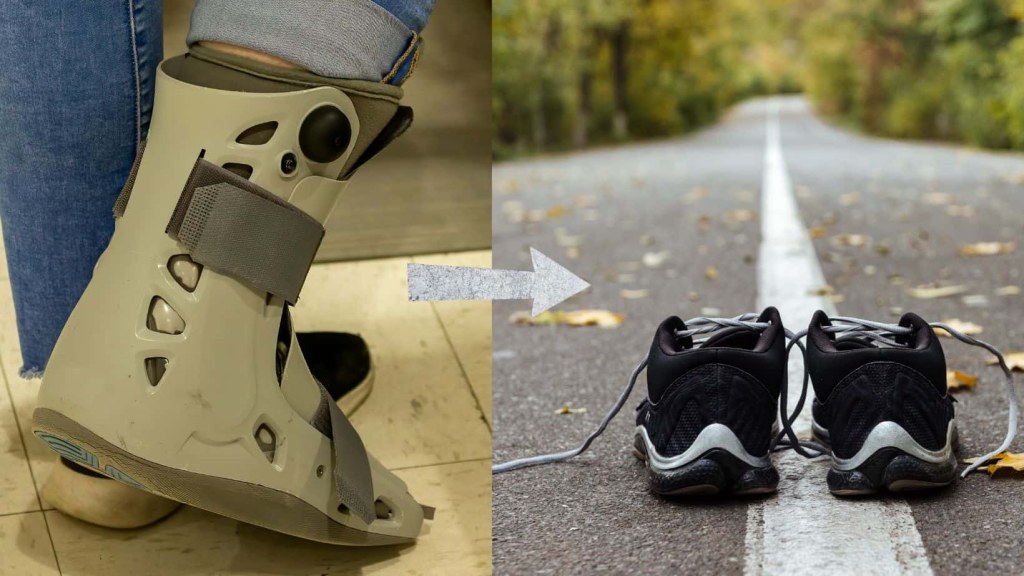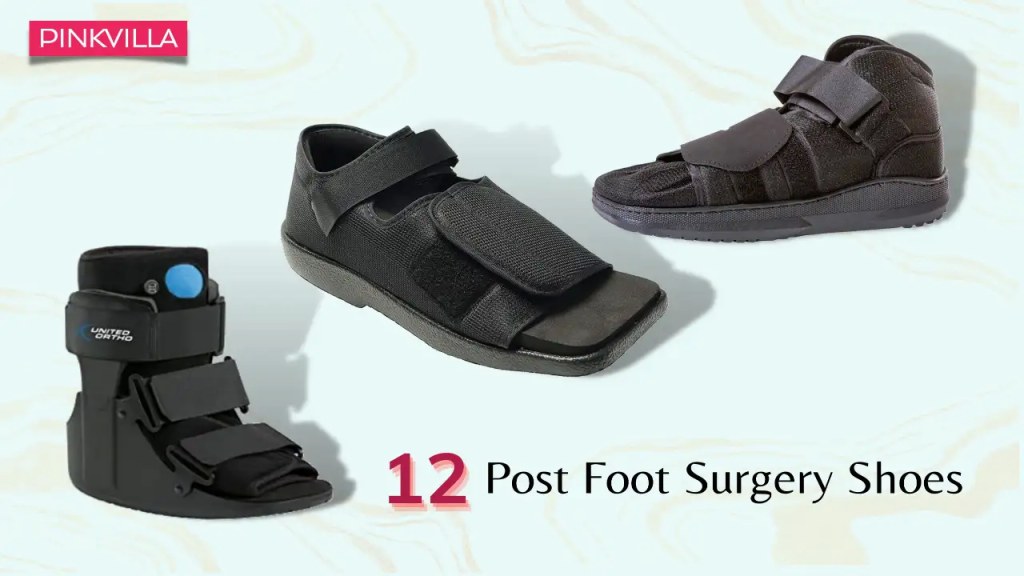Stepping Into Comfort: Transitioning To Shoes After Foot Surgery – Unlock A Pain-Free Journey Now!
Transitioning to Shoes After Foot Surgery
Greetings, Shoes Enthusiast!
Foot surgery is a delicate procedure that requires proper care and rehabilitation to ensure a successful recovery. One of the key aspects of this recovery process is transitioning from post-surgery footwear, such as casts or braces, to regular shoes. This transition can be challenging, but with the right knowledge and guidance, you can make it a smooth and comfortable experience. In this article, we will explore everything you need to know about transitioning to shoes after foot surgery.
3 Picture Gallery: Stepping Into Comfort: Transitioning To Shoes After Foot Surgery – Unlock A Pain-Free Journey Now!

![Picture of: Comfortable Shoes To Wear After Foot Surgery [ Reviews]](https://alloprof.biz/wp-content/uploads/2023/07/comfortable-shoes-to-wear-after-foot-surgery-reviews.jpg)

What is Transitioning to Shoes After Foot Surgery?
Transitioning to shoes after foot surgery refers to the gradual process of shifting from specialized post-surgery footwear to regular shoes. After a foot surgery, the foot needs time to heal and regain its strength before it can bear the weight and pressure of everyday shoes. This transition typically involves following a specific timeline and adopting certain practices to ensure a safe and successful recovery.
Who Should Transition to Shoes After Foot Surgery?
This process is applicable to anyone who has undergone foot surgery and is on the path to recovery. Whether you have had a bunionectomy, ankle fusion, or any other foot surgery, transitioning to shoes is an essential step in the healing journey. It is important to consult with your healthcare provider or orthopedic surgeon to determine the appropriate time and method for transitioning based on your specific surgery and individual circumstances.
When Should You Start Transitioning?

Image Source: james-mccormack.com
The timing of transitioning to shoes after foot surgery varies depending on the type of surgery and the rate of healing. Generally, it is recommended to wait until the surgical site has healed, any sutures or staples have been removed, and there is minimal to no swelling or pain. Your healthcare provider will guide you on when it is safe to begin the transition, typically around 6-8 weeks post-surgery.
Where Can You Find Suitable Shoes?
Finding suitable shoes during the transitioning phase is crucial to ensure comfort and support for your healing foot. It is recommended to visit a specialized shoe store or consult with a podiatrist to find the right footwear. They can provide expert advice and assist you in selecting shoes that accommodate any remaining swelling, orthotics or inserts, and align with your foot’s specific needs.
Why is Transitioning to Shoes Important?
Transitioning to regular shoes is important for several reasons. Firstly, it allows your foot to regain its natural range of motion and strength, promoting a faster and more complete recovery. Secondly, it enables you to resume your daily activities and return to a normal lifestyle. Lastly, proper footwear during the transition phase can help prevent any complications or setbacks, such as reinjury or discomfort.
How to Transition to Shoes After Foot Surgery?
The process of transitioning to shoes after foot surgery involves a gradual progression from post-surgery footwear to regular shoes. Here are some steps to follow:
![transitioning to shoes after foot surgery - Comfortable Shoes To Wear After Foot Surgery [ Reviews] transitioning to shoes after foot surgery - Comfortable Shoes To Wear After Foot Surgery [ Reviews]](https://alloprof.biz/wp-content/uploads/2023/07/comfortable-shoes-to-wear-after-foot-surgery-reviews.jpg)
Image Source: buniondr.com
Start with wearing post-surgery footwear for a few hours each day, gradually increasing the duration over time.
Once you can comfortably wear post-surgery shoes for a full day, begin incorporating regular shoes for shorter periods.
Choose shoes with adjustable closures, such as Velcro or laces, to accommodate any swelling or changes in foot size.
Gradually increase the time spent wearing regular shoes while monitoring for any discomfort or pain.
Continue to wear post-surgery footwear during periods of increased activity or when experiencing fatigue or swelling in the foot.
Consult with your healthcare provider or physical therapist for guidance on specific exercises and stretches to aid in the transition process.
Listen to your body and adjust the pace of the transition based on how your foot responds.
Advantages and Disadvantages of Transitioning to Shoes After Foot Surgery
Like any medical procedure or recovery process, transitioning to shoes after foot surgery has its advantages and disadvantages. Let’s explore them:
Advantages:
Improved mobility: Transitioning to regular shoes allows for better foot mobility and flexibility, enabling you to resume daily activities.
Enhanced comfort: Regular shoes provide increased cushioning and support, leading to improved comfort during walking and standing.
Restored confidence: Being able to wear regular shoes can boost your confidence and sense of normalcy after foot surgery.
Reduced reliance on assistive devices: Transitioning to shoes signifies a decreased need for post-surgery footwear, such as crutches or walkers, promoting greater independence.
Customizability: Regular shoes offer a wider range of styles and designs, allowing you to express your personal fashion choices.

Image Source: pinkvilla.com
Disadvantages:
Initial discomfort: Transitioning to regular shoes may cause some initial discomfort as your foot adjusts to the change in support and pressure.
Possible setbacks: Improper transitioning or wearing unsuitable shoes can lead to complications or delays in the healing process.
Individual variations: The success of transitioning varies from person to person, and some individuals may require a longer adjustment period.
Frequently Asked Questions (FAQ)
1. Can I wear any type of shoes during the transition phase?
During the transition phase, it is recommended to wear shoes that provide proper support, cushioning, and stability. Avoid shoes with high heels or narrow toe boxes, as they can cause discomfort and hinder the healing process.
2. How long does the transition phase typically last?
The duration of the transition phase varies depending on the individual, type of surgery, and rate of healing. It can range from a few weeks to a few months. Consult with your healthcare provider for a more accurate estimate based on your specific circumstances.
3. Should I continue wearing post-surgery footwear after the transition phase?
Once you have successfully transitioned to regular shoes and feel comfortable and stable, you can discontinue the use of post-surgery footwear. However, it is advisable to keep them on hand for situations where additional support or protection may be needed.
4. Are there any specific exercises or stretches that can aid in the transition process?
Yes, there are various exercises and stretches that can help strengthen and increase the flexibility of your foot during the transition phase. Consult with your healthcare provider or physical therapist for personalized recommendations.
5. What should I do if I experience pain or discomfort during the transition phase?
If you experience pain or discomfort during the transition phase, it is important to listen to your body and take appropriate measures. This may include reducing the time spent in regular shoes, using ice or heat therapy, or seeking guidance from your healthcare provider.
Conclusion
The transition from post-surgery footwear to regular shoes is a significant milestone in the recovery journey after foot surgery. By following the recommended timeline, wearing suitable shoes, and listening to your body, you can ensure a successful and comfortable transition. Remember to consult with your healthcare provider for personalized guidance throughout the process. Embrace this new phase with confidence and take pleasure in stepping back into your favorite shoes!
Thank you for joining us on this informative journey. We hope this article has provided you with valuable insights and guidance regarding transitioning to shoes after foot surgery. Wishing you a speedy recovery and many comfortable steps ahead!
Final Remarks
Disclaimer: The information provided in this article is for educational purposes only and should not be considered medical advice. Always consult with a healthcare professional or your orthopedic surgeon for personalized recommendations based on your specific condition and needs.
This post topic: Shoes



